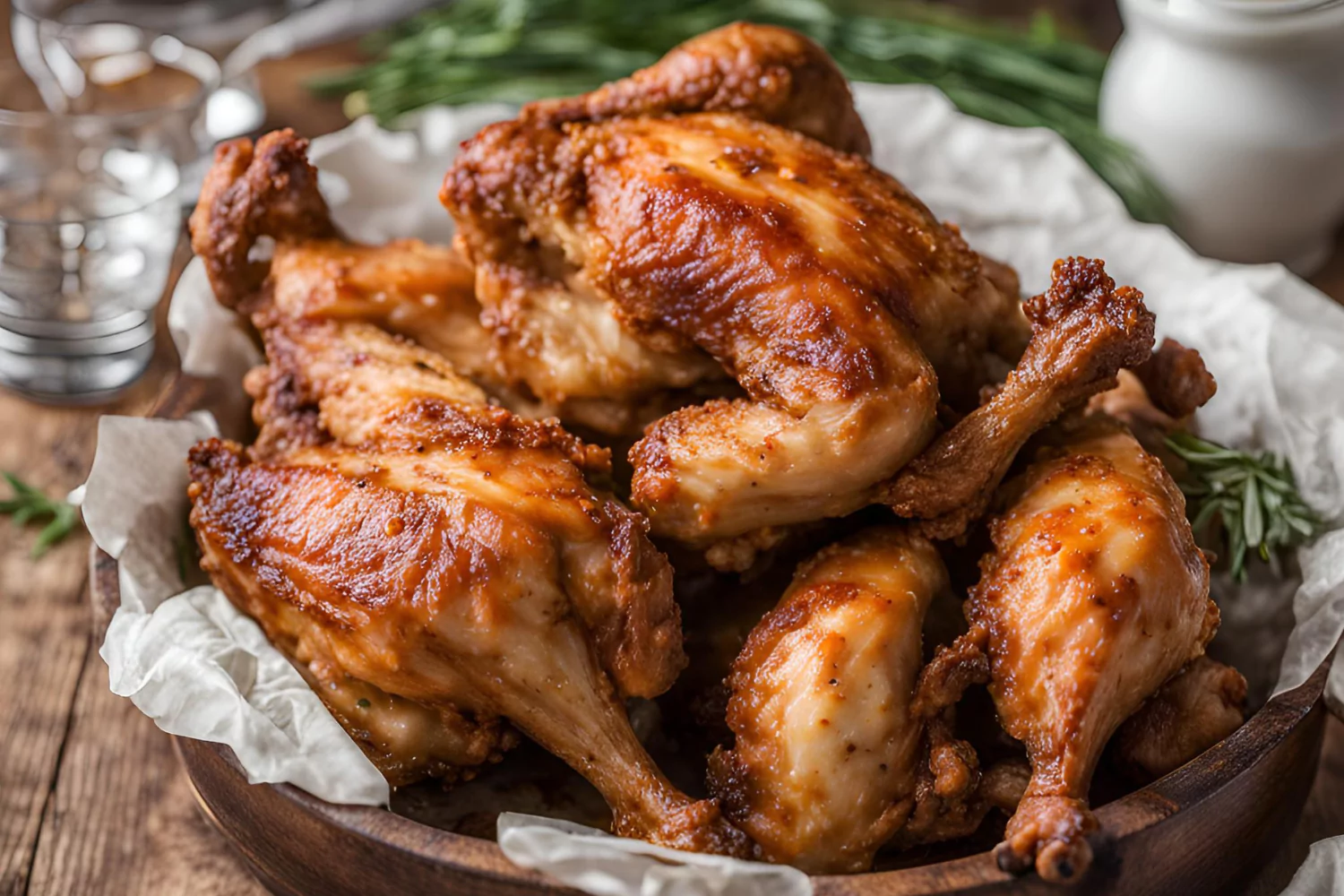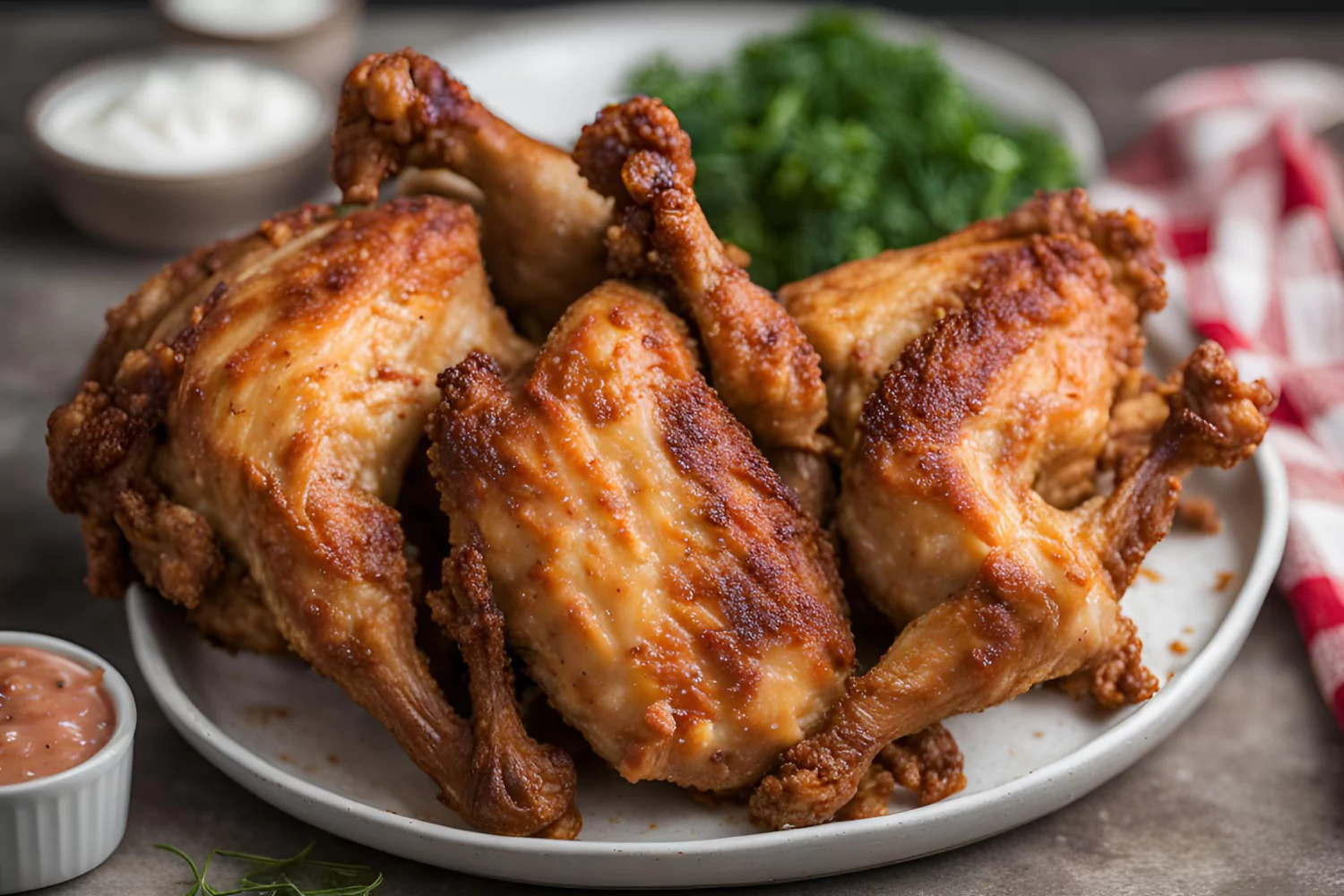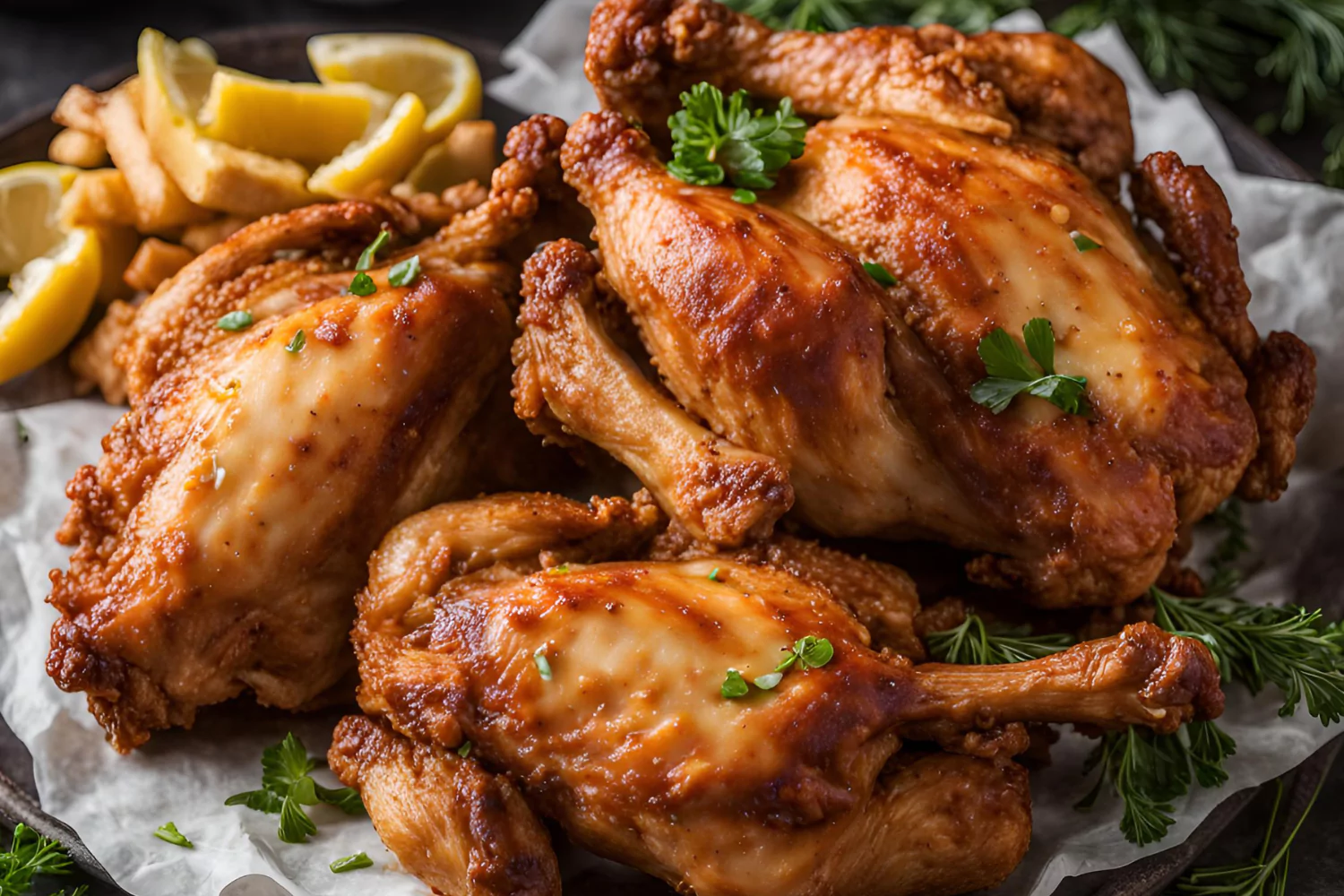How Hot Should Oil Be to Fry Chicken? Optimal Temperatures Explained
How hot should oil be to fry chicken? Frying chicken to perfection involves more than just tossing it in hot oil. The ideal oil temperature, the type of oil, and even the frying techniques play a crucial role in achieving that crispy, delicious result we all crave. This article will guide you through the optimal temperatures, best practices, and common pitfalls, ensuring your fried chicken is always a hit. Let’s dive in!
Introduction
Introduction to Frying Chicken
Frying chicken can be a bit of an art. It’s not just about submerging chicken in hot oil; it’s about getting the temperature just right. If the oil’s too hot, the outside burns while the inside stays raw. Too cool, and your chicken ends up greasy and unappetizing. Understanding the ideal frying temperature is key to achieving the perfect balance of crispy exterior and juicy interior.
Historical Context
Historically, fried chicken has been a staple in various cultures. From Southern fried chicken in the U.S. to different international versions, each tradition brings unique techniques and flavors. But one thing remains consistent: getting the oil temperature right is crucial.
Different and smaller slices of chicken could require a slight adjustment in temperature. Smaller pieces, like wings, cook faster and might need a slightly higher temperature, while larger pieces, like breasts, may benefit from a lower temperature to ensure thorough cooking without burning the outside.
Optimal Oil Temperature
Why Oil Temperature Matters
When frying chicken, the oil temperature matters immensely. If the oil is too cool, the chicken absorbs too much oil, becoming greasy and heavy. Conversely, if the oil is too hot, the exterior may burn before the interior cooks thoroughly. This balance is essential to achieving that perfect crispy texture without compromising the juicy interior.
Effects of Incorrect Oil Temperature
Frying chicken at the wrong temperature can lead to various issues. Too low, and the chicken ends up soggy and greasy. Too high, and it burns on the outside while remaining undercooked inside. Maintaining the right temperature ensures a golden, crispy crust and fully cooked meat.
Ideal Temperature Range
Recommended Temperatures
For the best results, maintain an oil temperature between 350°F and 375°F (175°C to 190°C). This range ensures the chicken cooks evenly, developing a crispy exterior and juicy interior. To check the oil’s temperature and make any required modifications, use a thermometer.
Temperature Variations
Different chicken cuts and sizes might require slight temperature adjustments. Smaller pieces, like wings, cook faster and might need a slightly higher temperature, while larger pieces, like breasts, may benefit from a lower temperature to ensure thorough cooking without burning the outside.
Choosing the Right Oil

Best Oils for Frying Chicken
The type of oil you use is crucial for achieving perfect fried chicken. Oils with a high smoke point are ideal as they can withstand the high temperatures needed for frying. Some of the best options include:
- Peanut Oil: Known for its high smoke point (around 450°F) and neutral flavor, peanut oil is a favorite for frying chicken. It doesn’t impart any unwanted flavors to the chicken and can be reused multiple times.
- Canola Oil: Another excellent choice, canola oil has a high smoke point (around 400°F) and is relatively low in saturated fats, making it a healthier option.
- Vegetable Oil: Versatile and widely available, vegetable oil has a high smoke point (around 400°F) and a neutral flavor, making it a good choice for frying chicken.
Oil Flavor and Health Considerations
When choosing an oil, consider both the flavor and health benefits. While some oils like olive oil have lower smoke points and strong flavors, oils like peanut, canola, and vegetable oil are more neutral and can withstand higher temperatures. Additionally, oils with higher levels of unsaturated fats are generally healthier choices for frying.
Preparing the Chicken
Marinating the Chicken
Marinating your chicken before frying can significantly enhance its flavor and moisture. A common marinade includes buttermilk, which helps tenderize the meat and adds a subtle tangy flavor. To marinate:
- Combine Ingredients: Mix buttermilk with hot sauce, salt, and pepper in a large bowl.
- Add Chicken: Submerge the chicken pieces in the marinade, ensuring they are fully coated.
- Refrigerate: Cover the bowl with plastic wrap and refrigerate for at least 3-4 hours, or overnight for best results.
Breading and Coating Techniques
Proper breading and coating are crucial for that crispy exterior. Here’s a simple method:
- Prepare Dredging Mix: Combine flour, cornstarch, garlic powder, paprika, salt, and pepper in a bowl.
- Coat Chicken: Remove the chicken from the marinade, letting excess drip off. Dredge each piece in the flour mixture, pressing it into the chicken to ensure an even coat.
- Let it Rest: Place the coated chicken on a wire rack and let it rest for about 15 minutes before frying. This helps the coating adhere better.
The Frying Process
Heating the Oil
Getting the oil to the right temperature is critical. Here’s how to do it:
- Preheat Your Oil: Place your chosen oil in a deep fryer or heavy-bottomed pot. Heat it over medium-high heat until it reaches 350°F to 375°F. To precisely keep an eye on the temperature, use a kitchen thermometer.
- Test the Temperature: If you don’t have a thermometer, you can drop a small piece of bread into the oil. If it turns golden brown in 50-60 seconds, the oil is ready.
Maintaining Temperature During Frying
Keeping the oil temperature steady is just as important as getting it there. Here are some tips:
- Fry in Batches: Avoid overcrowding the pot. Frying too many pieces at once lowers the oil temperature, leading to greasy chicken. Fry a few pieces at a time to maintain the ideal temperature.
- Adjust the Heat: Monitor the oil temperature continuously. If it drops, increase the heat slightly. If it gets too hot, reduce the heat.
- Use a Thermometer: A clip-on deep-fry thermometer can help you keep a constant watch on the oil’s temperature, ensuring it stays within the 350°F to 375°F range.
Frying Time and Doneness
Knowing how long to fry chicken is crucial for both safety and taste:
- Average Frying Times: Generally, fry chicken pieces for about 12-15 minutes, turning them occasionally. Wings may take around 8-10 minutes, while larger pieces like thighs and breasts might need 15-20 minutes.
- Check for Doneness: The internal temperature of the chicken should reach 165°F. Use an instant-read thermometer to check this. Insert it into the thickest part of the chicken, avoiding the bone.
Post-Frying Steps
Draining and Resting the Chicken
Once your chicken is fried to perfection, proper draining and resting ensure it stays crispy and delicious:
- Drain Excess Oil: Use a slotted spoon to remove the chicken from the oil. Place it on a wire rack set over a baking sheet. This prevents the chicken from becoming mushy by letting extra oil drop off.
- Let it Rest: Allow the chicken to rest for about 10 minutes. This helps the juices redistribute, keeping the meat moist while the coating stays crispy.
Reusing and Storing Oil
Used oil can be reused if handled correctly. Here’s how to manage it:
- Strain the Oil: Once the oil has cooled, strain it through a fine mesh sieve or cheesecloth to remove any food particles.
- Store Properly: Store the strained oil in a clean, airtight container. To keep it in good condition, store it somewhere cold and dark. Label the container with the type of oil and the date it was used.
Common Mistakes and How to Avoid Them
Top Mistakes in Frying Chicken
Avoid these common pitfalls to ensure your fried chicken is always top-notch:
- Using the Wrong Oil: Not all oils are suitable for frying. Use oils with high smoke points, like peanut, canola, or vegetable oil, to avoid smoking and burning.
- Overcrowding the Pot: Frying too many pieces at once lowers the oil temperature, resulting in greasy, unevenly cooked chicken. Fry in small batches to maintain consistent heat.
- Incorrect Oil Temperature: Frying at too low or too high a temperature leads to greasy or burnt chicken. Use a thermometer to keep the oil within the 350°F to 375°F range.
Troubleshooting Tips
Here’s how to fix common frying issues on the fly:
- Oil Too Cool: If your oil temperature drops, remove some chicken pieces and let the oil heat back up before adding more.
- Oil Too Hot: If the oil gets too hot, turn down the heat and remove the pot from the burner for a minute to cool slightly.
- Soggy Chicken: Ensure the chicken is fully coated in the breading mixture and let it rest before frying to achieve a crispy crust.
Advanced Techniques for Perfect Fried Chicken

Using a Double Fry Method
For an extra-crispy crust, consider using the double fry method. This technique involves frying the chicken twice: first at a lower temperature to cook it through, then at a higher temperature to crisp up the exterior. So, how hot should oil be to fry chicken using this method?
- First Fry: Heat the oil to 325°F. Fry the chicken pieces for about 8-10 minutes, depending on their size, until they are cooked through but not overly browned.
- Rest: Remove the chicken from the oil and let it rest on a wire rack for about 10 minutes.
- Second Fry: Increase the oil temperature to 375°F. Fry the chicken again for 2-3 minutes until it achieves a golden-brown, crispy crust.
Brining for Extra Juiciness
Brining your chicken before frying can help ensure it stays juicy on the inside while developing a crispy crust on the outside. Here’s a simple brine recipe:
- Ingredients: Combine 1 gallon of water, 1 cup of salt, 1 cup of sugar, and your choice of spices (such as bay leaves, garlic, and peppercorns).
- Brining Process: Submerge the chicken in the brine solution and refrigerate for 4-6 hours.
- Rinse and Dry: Rinse the chicken thoroughly to remove excess salt and pat it dry before proceeding with marination and breading.
Utilizing Different Coatings
Experimenting with different coatings can add variety to your fried chicken. Here are a few options:
- Cornstarch: Adding cornstarch to your flour mixture can make the crust lighter and crispier.
- Breadcrumbs or Panko: These can provide a crunchier texture compared to flour alone.
- Crushed Cereal or Crackers: For a unique twist, try using crushed cornflakes or crackers as part of the breading mix.
Frying Without a Thermometer
If you don’t have a thermometer, there are still ways to gauge the oil temperature. Knowing how hot should oil be to fry chicken is crucial even without precise tools:
- Bread Test: Drop a 1-inch cube of bread into the oil. If it browns in 60 seconds, the oil is around 365°F to 375°F.
- Water Droplet Test: Flick a small amount of water into the oil. If it sizzles and evaporates immediately, the oil is hot enough.
Wrapping Up
By mastering these advanced techniques and understanding how hot should oil be to fry chicken, you can achieve professional-quality results at home. Whether you’re using a double fry method for extra crispiness, brining for juiciness, or experimenting with different coatings, these tips will help you create the perfect fried chicken every time.

